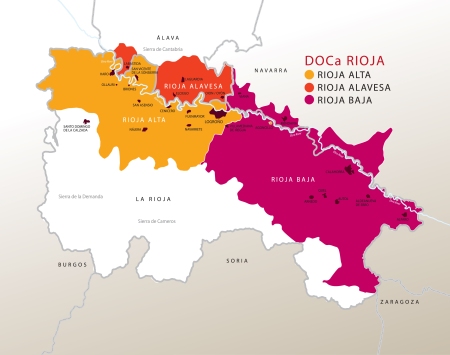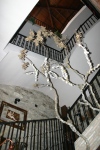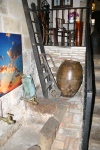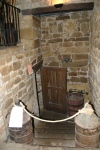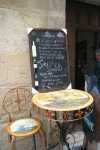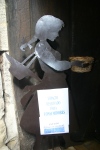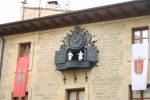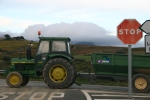Every fall we set aside a select few bellota hams for our customers and release them in small limited quantities as they reach their optimal point of curation. We’ve paired the ham with a fine selection of red wines, perfect for the newly-arrived cold weather. One wine we stumbled upon one while on a recent visit to the Alavesa. The Rioja Alavesa is a fascinating microclimate made perfect for growing grapes by the Cantabrian Mountains to the north that moderate the Atlantic weather and by the sinuous Ebro River to the south into which many tributaries feed.
D.O. Rioja is strewn across three out of 17 of Spain’s Autonomous Communities: La Rioja, the Basque Country, and Navarra. Since the inceptions of the regulating board of D.O. Rioja in 1925 there have been very few, if any, changes made to the three distinct viticultural areas that are known as the following three sub-regions: Rioja Alta, Rioja Baja, and the protagonist to this post, the Rioja Alavesa. The Alavesa is the smallest of the three in terms of land under vine, some 12,934 hectares. The Alavesa belongs to the Basque Country’s Álava county and when criss crossing the D.O. Rioja, you will often pass through the Basque Country into La Rioja and back again without realizing.
Historically, the wine from different corners of the D.O. has been blended to make a common Rioja wine that is medium bodied with medium tannin, red and black berry fruit aromas, decent acidity, and the most salient trait, oak and more oak, usually from American forests therefore explaining the high toast, coconut, and vanilla notes on the nose.
As Rioja wines have gained international recognition over the years there has been a more accelerated movement toward single-vineyard bottlings. Bodegueros of the Alavesa are leading this because vineyards are already divided into small plots, often terraced as they move up the hill toward the base of the Cantabrian Mountains. The soils are poor calcareous clay that have good water retention but poor drainage. This may have worked against the growers this season as there were heavy rains in the second half of harvest that did not let up and so pickers had grapes with lower fruit concentrations. These soils are good at maintaining a constant low temperature, which can be a double-edged sword. If the fruit cannot ripen by the end of the season, the harvest is in trouble. Assuming the fruit ripens “on time”, then the acidity levels will usually be high.
Vine density is low due to reduced nutrients in the soil. The continental climate is heavily influenced by the Atlantic fronts that bring a lot of moisture, though the most severe weather is blocked by the Cantabrian Mountains. Alavesa has many superb wineries producing the fulliest-bodied versions of tempranillo. Other red varieties permitted in the D.O. are garnacha, graciano, mazuelo and maturana tinta. The bodegas supplying San Jamón are Heredad de Baroja and Lar de Paula in Elvillar. The below photos are from our recent trip.
- Vineyards in Rioja Alta with sun actually shining
- Looking toward Laguardia
- Rioja with Cantabrian Mountains in background
- Beautiful old stone floor, Laguardia
- Bar interior, Laguardia
- Old bodega-turned-bar, Laguardia
- Old bodega-turned-bar, Laguardia
- Tapas offerings outside underground bodega and bar, common in Laguardia
- Where are my shoes? Shoe sculpture, Laguardia
- Treating us to a wine in her bar, Laguardia
- For customers only!
- Our export manager, Vanessa Harris
- Church grounds, Laguardia
- Church tower, Laguardia
- Laguardia coat of arms
- These dancing clock figures come out every hour and do a little song and dance number and then go back into their clock cave.
- Rainy afternoon during harvest in Laguardia, Rioja
- Cloudy skies in Laguardia
- View from Laguardia to vineyards below
- Vineyards on road to ElCiego
- Bodegas Baigorri, Samaniego, Rioja Alavesa
- Baigorri
- Heredad de Baroja winery in Elvillar
- Cloud cover around Cantabrian mountains in Elvillar
- Harvest time in Elvillar
